Medieval fire festivals of modern Catalonia
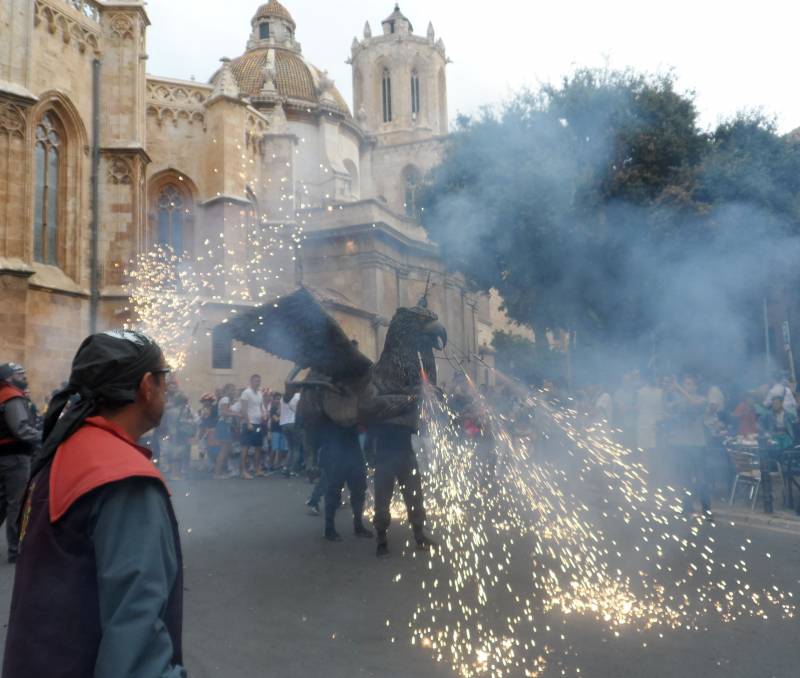
In September 2016, I ended up in one of the hotels on the Spanish coast of Costa Dorada, located in the Cap Salou area. Having got used to it a little, I decided to devote one of the days to visiting the nearby capital of this province - Tarragona. Moreover, there were no problems with transport: the entire region south of Barcelona is served by the Bus Plana transport company that works like a clock (with which you can also go on a number of excursions with Russian-speaking guides). Having walked along the central street of Rambla Nova, I turned left to the fortress wall, which the Romans began to build - the first on the Iberian Peninsula:
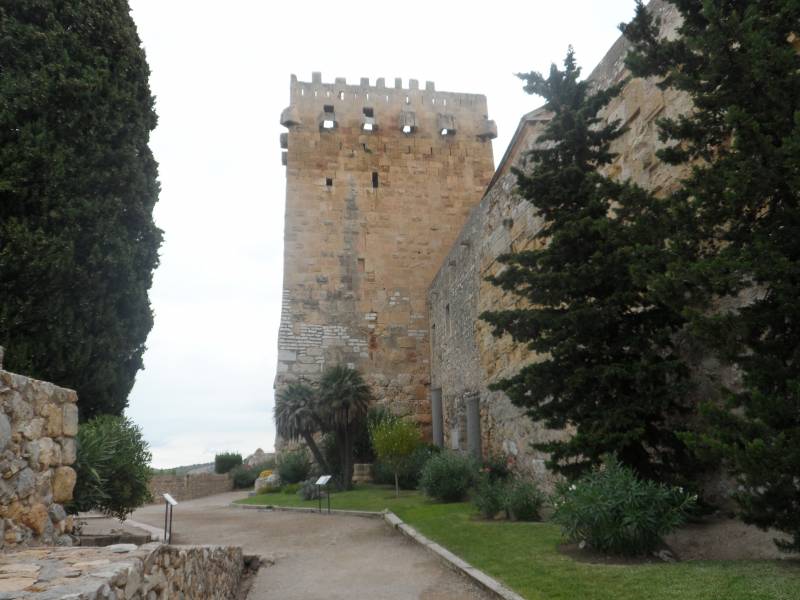
And soon he went to the city cathedral, where something interesting was clearly happening.
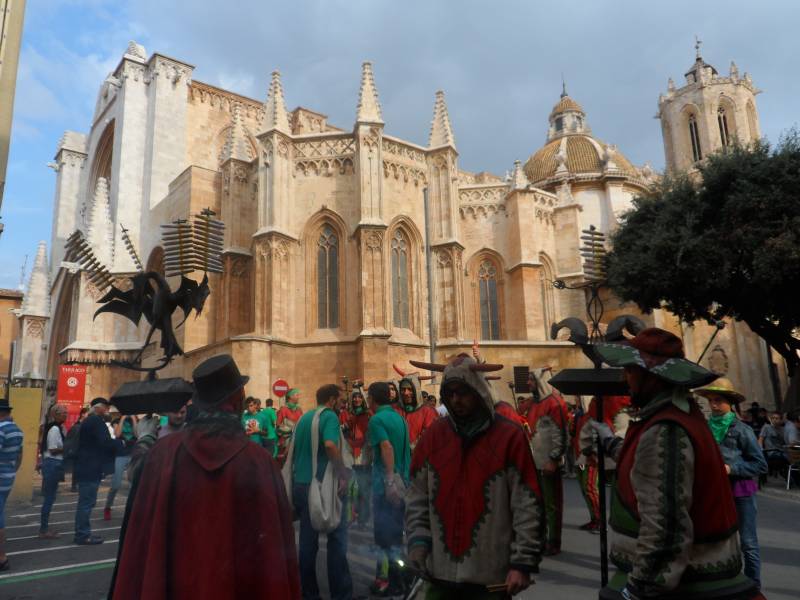
As it turned out, I came here just in time, because literally three minutes later something unimaginable began here.
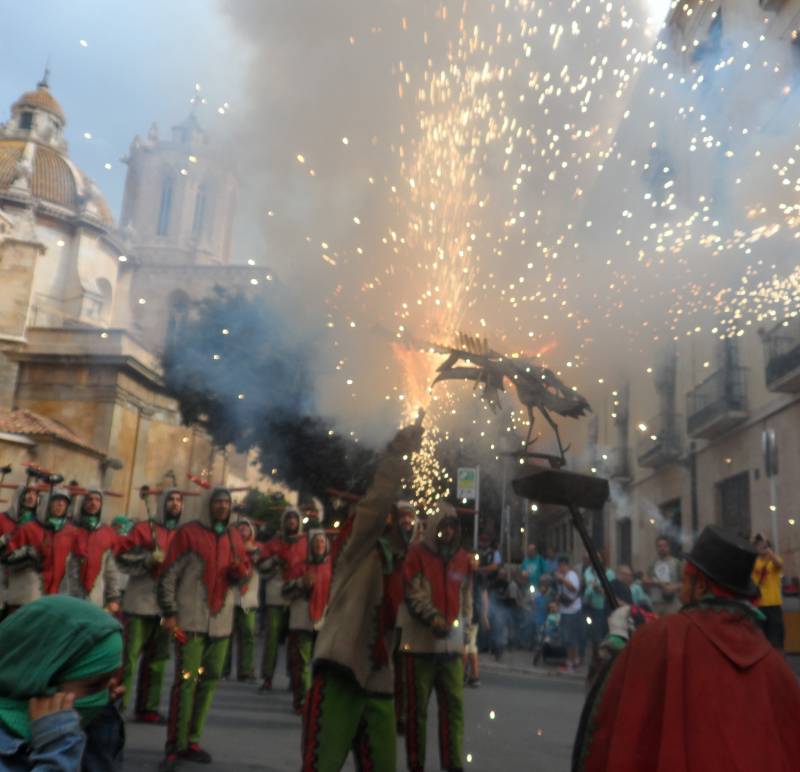

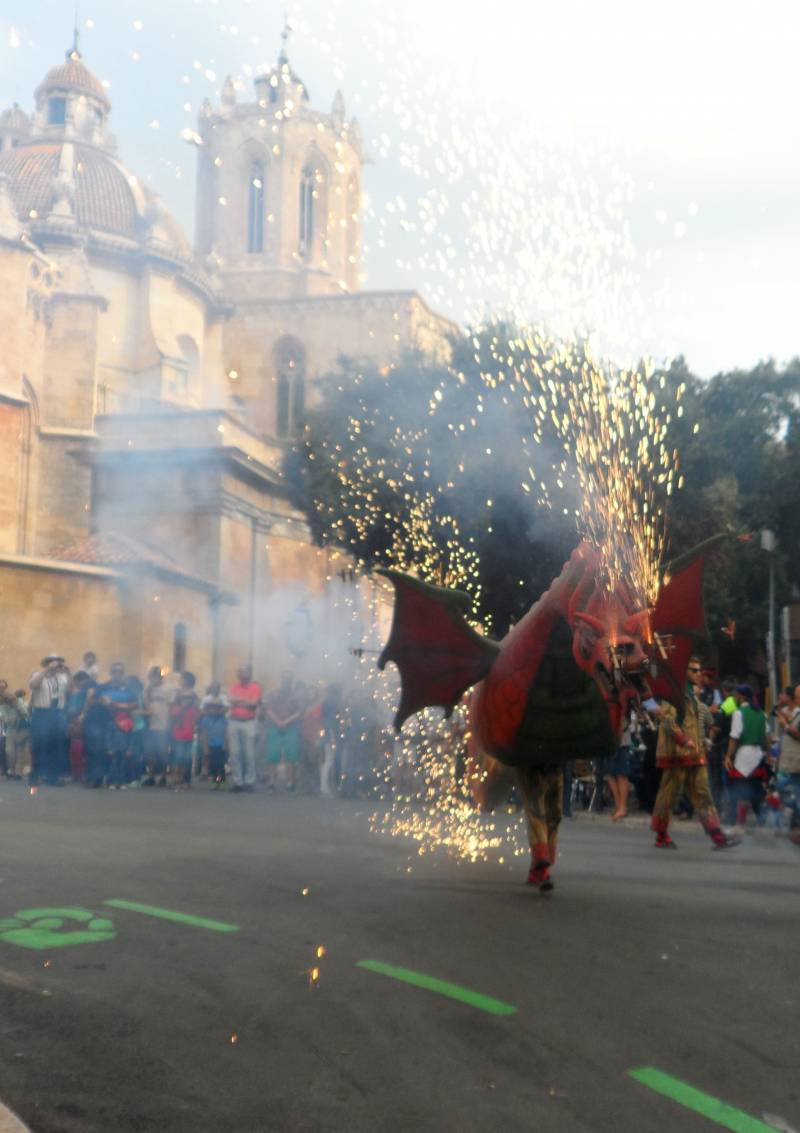
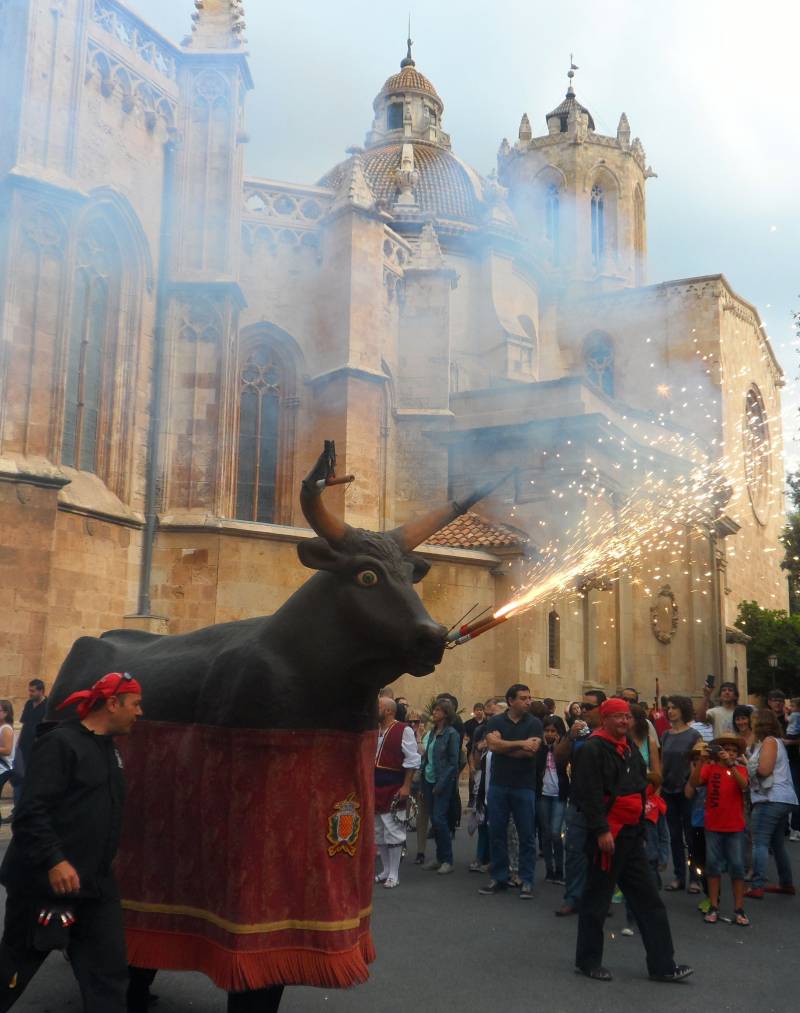
The fact that this action took place on a very narrow street made a special impression, and the Spaniards for the most part are good-natured nihilists. They did not take even the slightest fire safety measures and did not mind if the audience came close: a person wants sparks to burn through his clothes - but for God's sake, do not interfere with him, let him enjoy it. The procession ended in the square near the city hall, where the famous Catalan "living tower" was built.
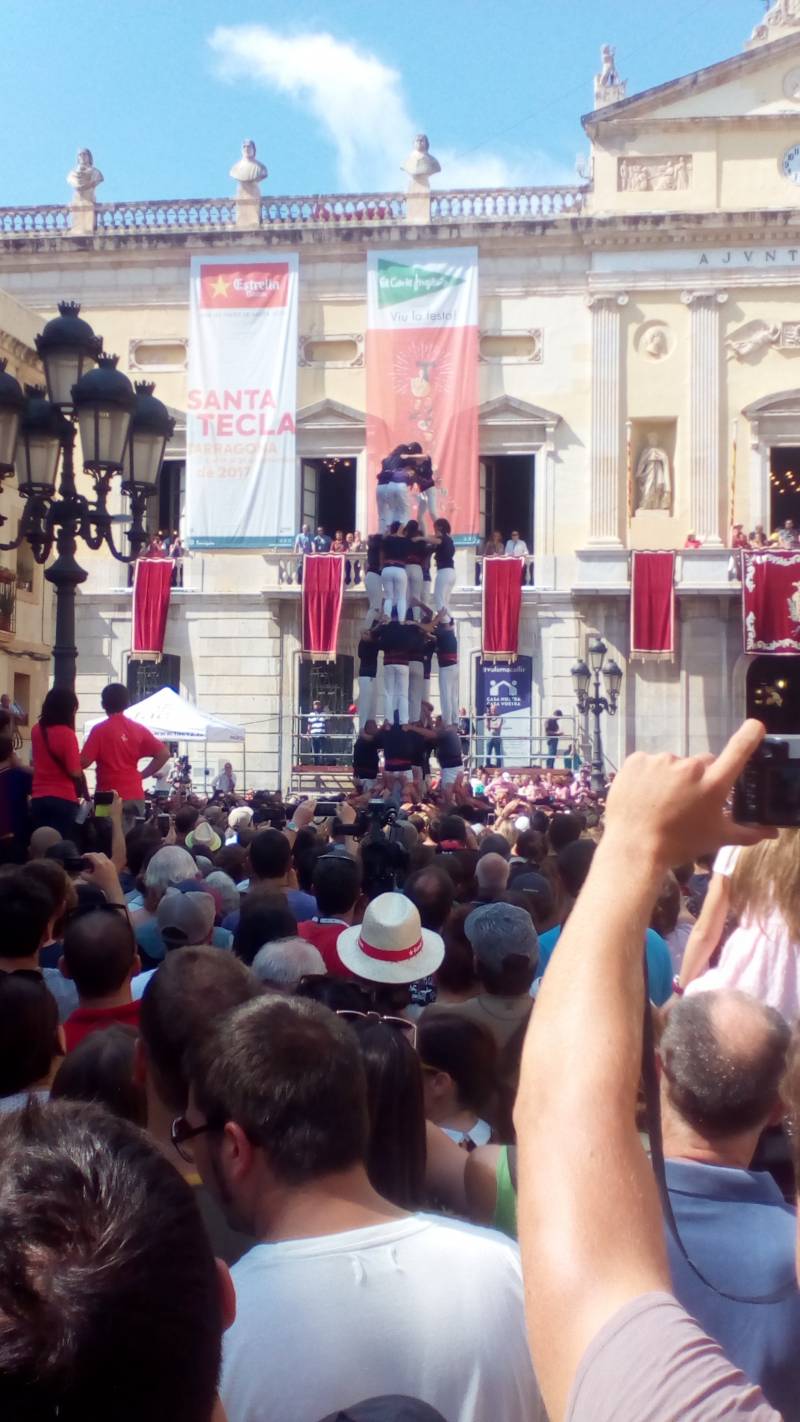
Before that, I saw a sculptural composition depicting such an 8-step pyramid on the Rambla.
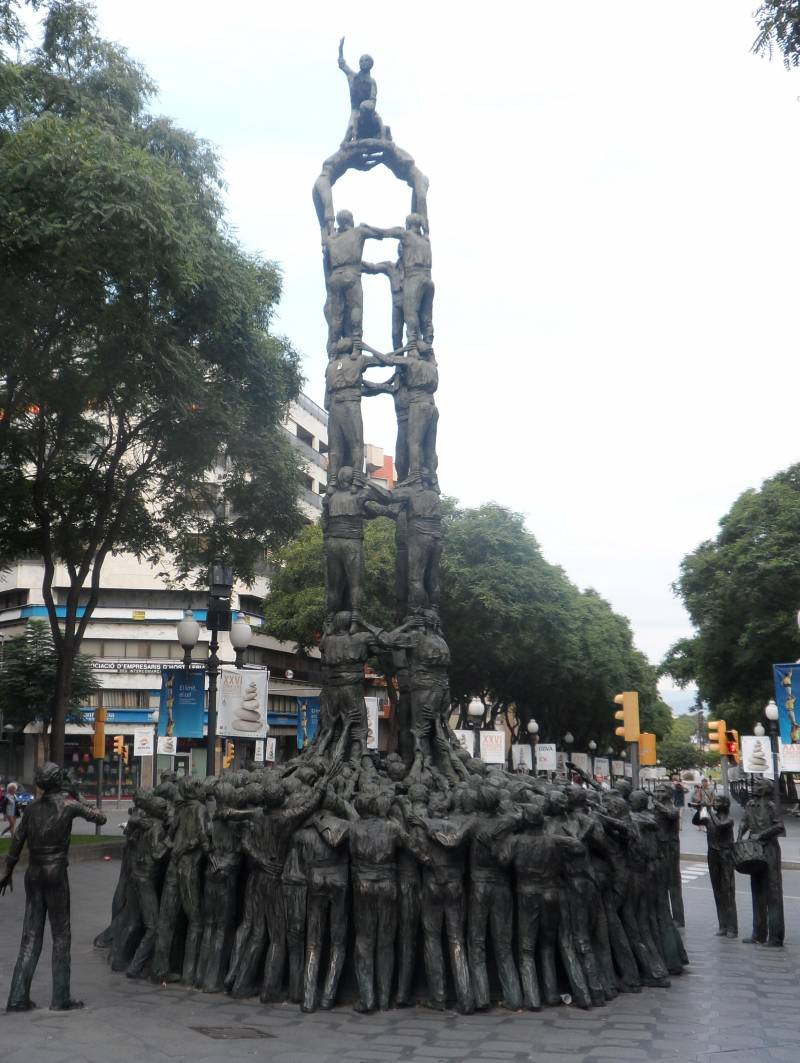
Now I have the opportunity to see the process of its construction with my own eyes.
Returning to the hotel, I began to find out what was happening today in Tarragona, and realized that I was at the culmination of the Santa Tecla holiday (Santa Tecla), which, according to centuries-old tradition, lasts 8 days.
Tarragona and Santa Tecla
According to the apocrypha "Acts of Paul and Thekla (Thekla)", this saint, revered as an Equal-to-the-Apostles saint, was born in the 30s. I century AD and was the daughter of a wealthy citizen from Asia Minor Iconium (now it is the Turkish city of Konya).
This is how Saint Thekla is represented on a fresco of the XNUMXth century in the Transfiguration Cathedral in Chernihiv:
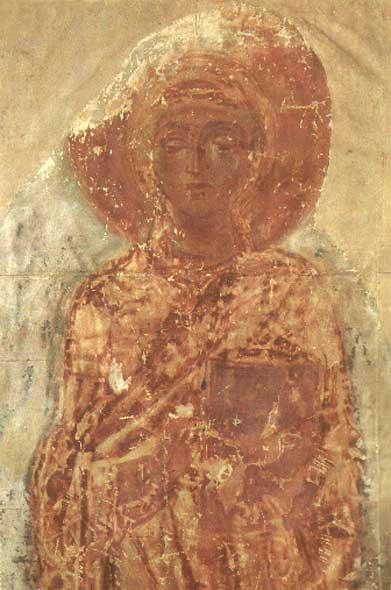
Having heard the sermon of the Apostle Paul who came to the city, the girl refused to marry and wished to leave home with him. Thekla's parents and fiancé accused the future saint of preaching celibacy (which was considered a serious crime) and even of witchcraft. According to the apocrypha, the city authorities sentenced Paul to exile, and Thekla to be burned at the stake. This was not possible due to rain. Later, the girl nevertheless left her home and met with Paul in Antioch. But even here there were some adventures, because she attracted the attention of the Roman governor and, in response to his harassment, “tore off the mantle from Alexander and tore it, and removed the wreath from his head.”
This time, for insulting the highest official of the Roman Empire, Thekla was sentenced to be torn to pieces by wild animals. However, this, already the second in a short time, death sentence remained unfulfilled. The lioness, which was released first, showed no interest in the victim. But she killed the bear that came out second, and then also the lion, however, she herself died in a fight with him.
The audience was probably satisfied: it certainly was not what they expected to see, but the show certainly succeeded. But then it was not so interesting, because there were no more predators at hand. Theocla was now unsuccessfully tried to be fed ... to seals, and then to be torn apart with the help of bulls. These futile attempts at persecution made such an impression on everyone that the girl was released.
After that, she initially accompanied Paul, but over time she began to preach on her own and allegedly reached Spain. At the end of her life, already at the age of about 90, the future saint settled in a cave in Syria near Seleucia. When the pagan priests tried to take Thekla out of there, the vaults of the cave collapsed at her prayer. According to legend, only the hand remained of the saint, which was brought to Cilician Armenia.
However, this does not prevent the Italians from claiming that the head of this saint is kept in the Duomo Cathedral in Milan. And there are different opinions about the fate of her hand. The legend that developed in Tarragona in the Middle Ages claims that in 1321 the relic was presented by the Armenian king Oshin to the Aragonese king Jaime II. He gave away a herd of two hundred horses, a golden throne and four hundred heads of cheese from the island of Mallorca.
In general, this exchange of "gifts" is very reminiscent of the purchase of relics from Armenians. However, a monastery on the outskirts of the Cypriot village of Mosfiloti and a Syrian monastery in the city of Maaloula also make claims for the possession of this relic. In addition, it is alleged that part of the right hand of St. Thekla is located in the Russian Assumption Feklina female hermitage, on the territory of the Kozelsky district of the Kaluga region.
But let us return to the Tarragona version and try to understand why it was the relics of St. Thecla that attracted the attention of Jaime II?
The veneration of this saint in Tarragona began at the beginning of the 1118th century. Count Ramon Beregner the Great conquered this city from the Moors in XNUMX. And in the same year, Pope Gelasius II issued a bull in which the day of Saint Thekla was declared the main holiday of the year. And since, according to legend, Thekla preached in Tarragona, the cult of this saint began to form and strengthen in the newly populated by Christians city.
In Tarragona, the relics of Thekla were greeted with a solemn meeting. And since 1359, the beginning of the annual holiday in her honor has been recorded here, which lasted for 8 days (octava de Santa Tecla). Its charter (Ordinacions de Santa Tecla) was approved and published in 1370.
The first mention of the “bestiary” of this holiday dates back to 1381. Since that time, for example, the tortoise Cucafera (Cucafera de Tarragona) invented by the furrier shop has been taking part in it: in those days, for some reason, tortoises were considered the embodiment of the forces of evil and hell. In 1991, Cucafera was revived by the Tarragona Port Quarter Association. It is managed by 6 people at once.
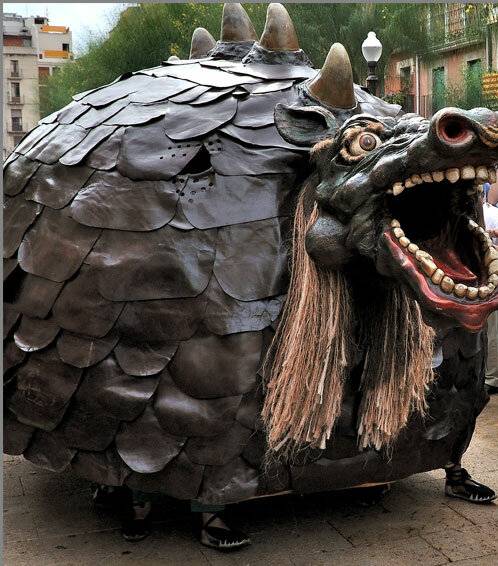
This turtle is just not fire-breathing, and now sweets are pouring out of its mouth.
The dragon, whose photograph you saw at the beginning of the article, appeared in 1426, and its new birth took place in 1985. It is controlled by one person, and the weight of this “reptile” is 92 kg. The weight of the Fire Wyvern is slightly less - 83 kg.
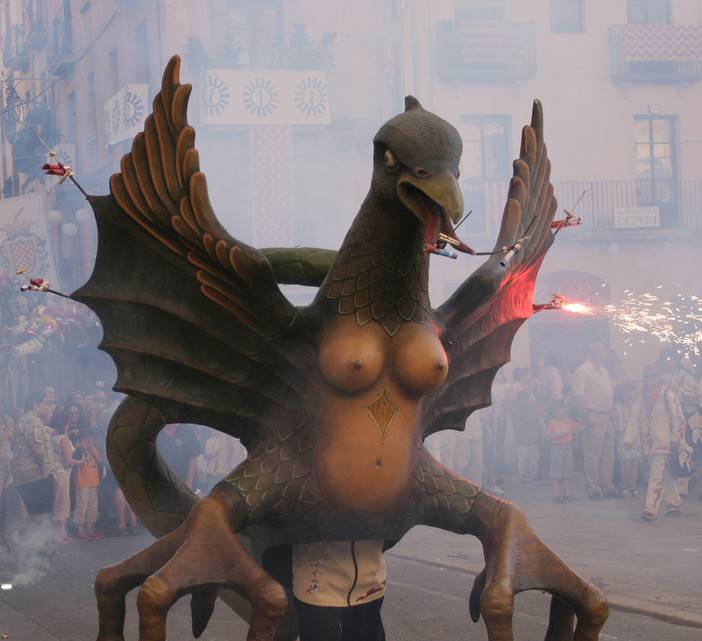
Since 1383, fireworks, which were made by local pharmacists, began to be used at the festival.
At the beginning of the XNUMXth century, the “Dance of the Seven Deadly Sins” (Ball dels set pecats capitals) appeared.
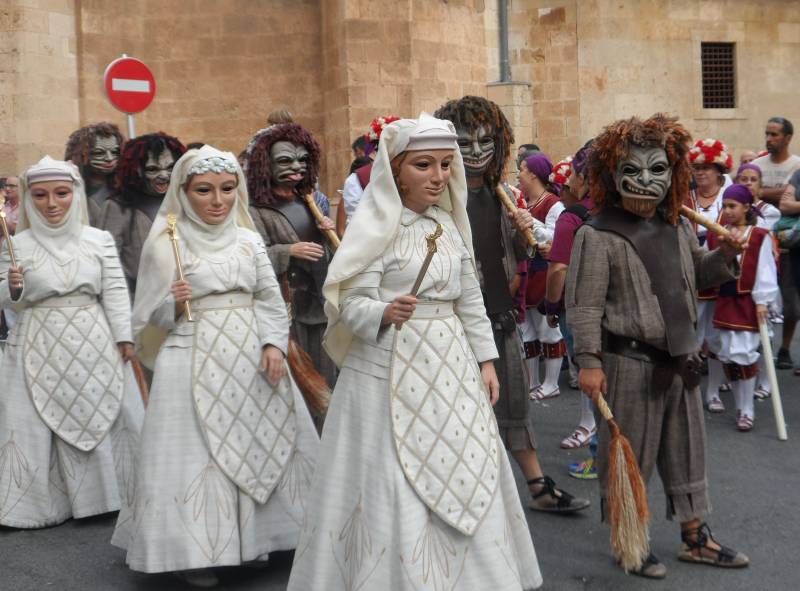
Actors "Dance of the Seven Deadly Sins"
And in the XNUMXth century, representatives of various workshops began to perform the so-called "conversational dances" (balls parlats).
In 1564, the feast in honor of Saint Thecla in the entire province of Tarragona finally acquired an official character.
At the end of the 92th century (or at the beginning of the 10th century), “living towers” (castells) began to be built in Tarragona. It is believed that this tradition originates from the Valencian dance in honor of the Virgin Mary, which ended with the construction of a "living pyramid" of three levels. There are now XNUMX "builder" teams in Catalonia, some of them capable of building a XNUMX-story tower.
It is believed that each such tower is a kind of “family tree”: people become younger with each “floor”, a child crowns the pyramid. The tower is considered finished when he, having straightened up, raises his hand. "Living towers" are now also being built in the French Roussillon and the Balearic Islands.
In the first half of the XNUMXth century, giant dolls became attributes of the holiday: moors (gegants moros), black giants (gegantons negritos) and “old giants” (“big-headed”). The dolls have long been owned by the municipality, but the black and Moorish giants are traditionally run by members of the gypsy community.
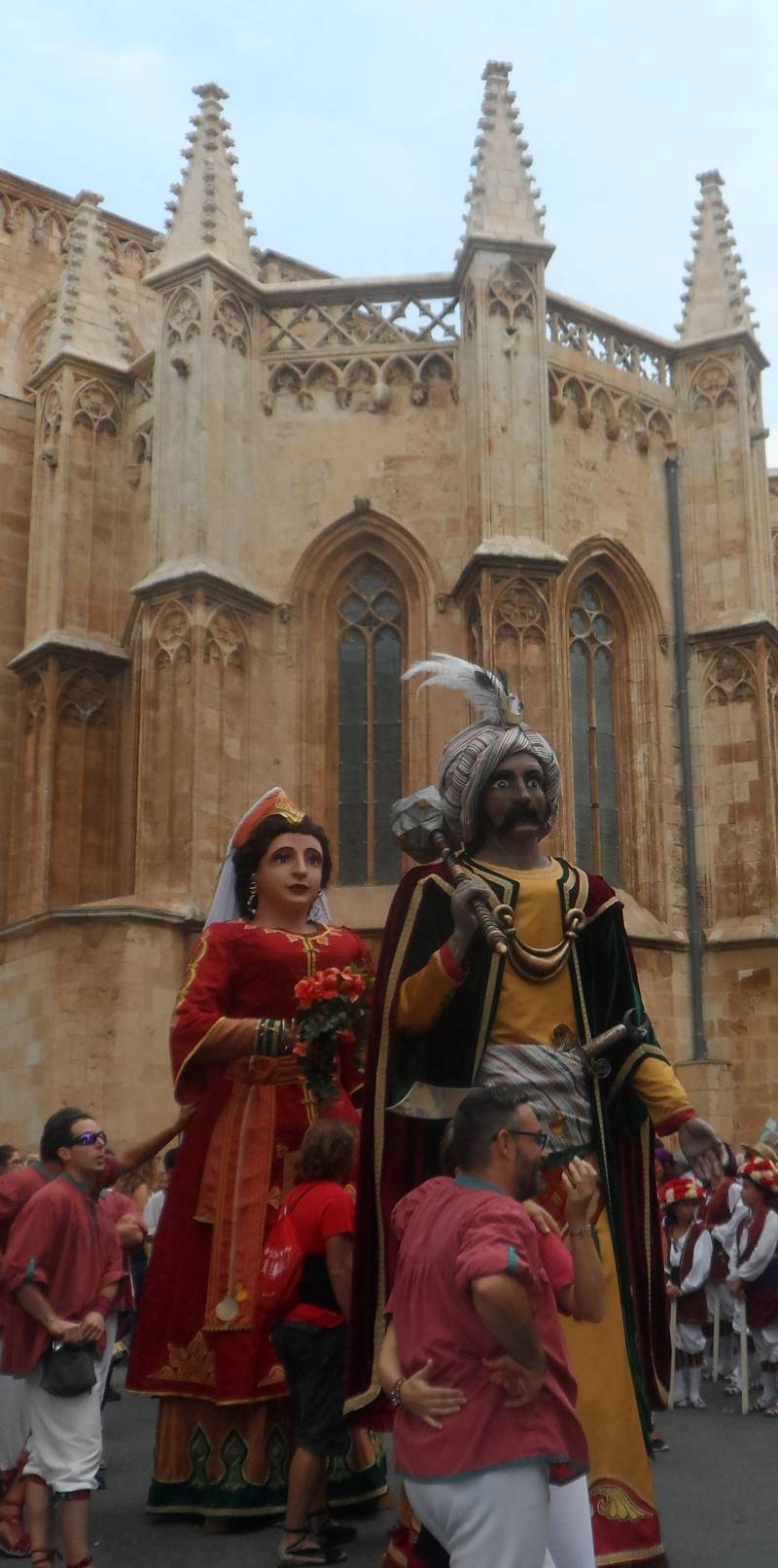
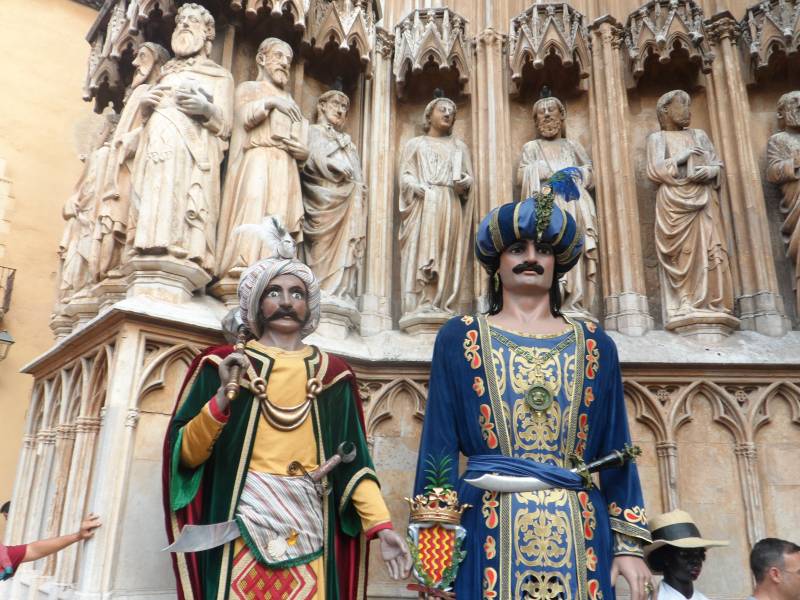
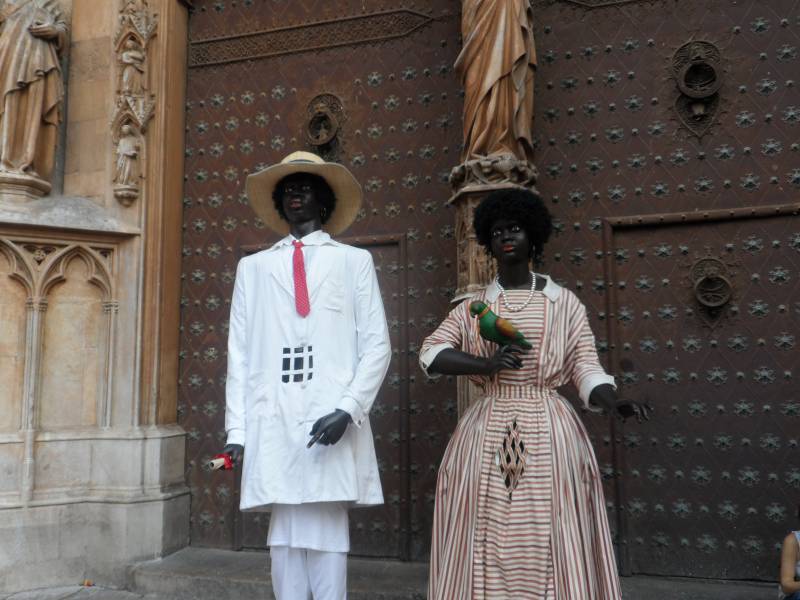
In 1911, Pope Pius X unexpectedly decided to exclude St. Thekla's day from the number of holidays, but in 1917 this decision was canceled by Pope Benedict XV. Since the 70s. In the XNUMXth century, the days of Saint Thekla received the status of a "traditional holiday of national tourist importance." The religious essence faded into the background, the events acquired an increasingly secular and entertaining character of a kind of ethnographic festival.
In 1998, one of the eight days of Santa Tecla became "childish", which had never happened before. Now the holiday, in essence, has little to do with a religious cult, only a small part of its spectators then go to the service in the local cathedral.
Reading materials about Santa Tecla, I learned along the way that a similar holiday is also held annually in September in the neighboring city of Reus. And so I decided to come back to this region of Catalonia a year later: at the exact time when it would be possible to visit the festive Reus and once again watch the feast of Saint Thecla in Tarragona. And, of course, compare them.
Reus and Misericordia
Reus is not only beautiful, but also a very cozy city. There are no crowds of tourists in it, but the residents, it seems, are not at all complex about this, leaving Barcelona and seaside resort towns “at the mercy” of visitors.
By the way, try to guess the name of this boy?
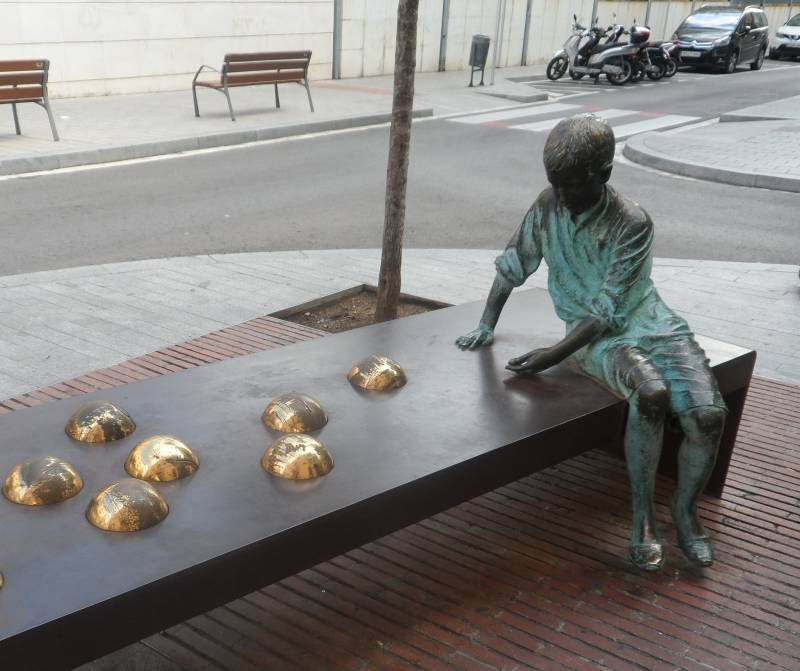
This is Antoni Gaudí, who was born in Reus but moved to Barcelona at the age of 16. And he never built anything in his hometown (however, there is still a Gaudi museum in Reus).
The events that marked the beginning of the holiday, which I visited this time, date back to 1592. Tradition says that during the plague, the Virgin Mary appeared to a young shepherdess named Isabel Besora. She said that the disease would recede if you walked around the walls of Reus with a large candle, which should then be placed in front of her image.
As you probably guessed, the members of the city council only laughed at the girl. And then Mary, who reappeared, kissed Isabelle on the cheek, on which the image of a rose flower appeared. It was no longer possible to ignore such a miracle, the will of the Mother of God was fulfilled, and the epidemic stopped. In honor of this event, on the site of the appearance of the Virgin, 10 years later, the chapel of the Virgin Mary of Mercy (Santuario de la Virgen de la Misericordia) was built.
At the end of the XNUMXth century, a church appeared here, which has survived to this day. The Mother of God began to be considered the patroness and protector of the city. And the square was named after the young shepherdess - Plaça de la Pastoreta. On it you can see one of the two statues of Isabel. This townspeople traditionally call fadrineta ("young girl").
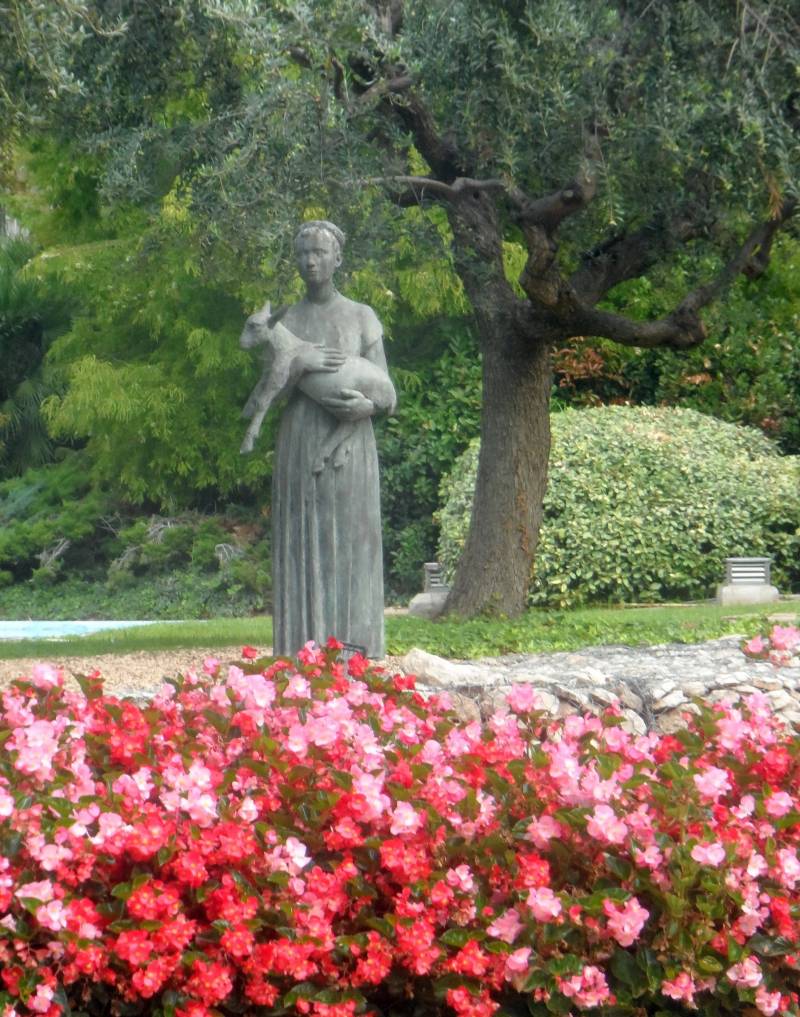
The Church of Mary the Merciful was badly damaged in 1936 during the civil war. Then the ancient image of the Mother of God burned down and the statues of four Old Testament wives - Abigail, Esther, Judith and Ruth, which Gaudi considered one of the best religious sculptures in the world, were destroyed. The new image of the Virgin Mary was created by the Barcelona-based Enrico Monjo, and the statues were made by the native of Reus, Arturo Aldo (the author of the monument to the young Gaudi, whose photo you have already seen).
But we've gone too far ahead.
Since the end of the 25th century, the tradition of the annual fiery procession of “dancing devils” (ball de diables) has appeared in Reus. And once every 2029 years, the mystery of Our Lady (ball de la Mare de Deu) takes place - a performance illustrating the legend of the appearance of the Virgin Mary to the shepherdess Isabel (its nearest date is XNUMX).
This time I was prepared and therefore decided to arrive in advance, starting the tour from the Church of Mary the Merciful - the end point of the festive procession. I decided that at this time I could inspect everything calmly - almost alone. And then I'll go to meet the festive procession. And my assumptions were completely justified.
But this church is located away from the city center, and it had to be found first. When addressing questions to the inhabitants of some Spanish city, I always exhale and mentally say to myself: this is a Spaniard, he does not know either Russian or English, and I do not know Spanish. Most likely, he will not understand me, and if he understands, then it is wrong.
If he does understand me, it will almost certainly turn out that he does not know the answer to my question (even if the right place is three houses from here). But he will wave his arms for three minutes (at least), say something, and eventually send me in the opposite direction. However, the attempt is not torture: “we smile and wave” (in response). But this time I was lucky, and I ran into a girl who was clearly a participant in the upcoming holiday.
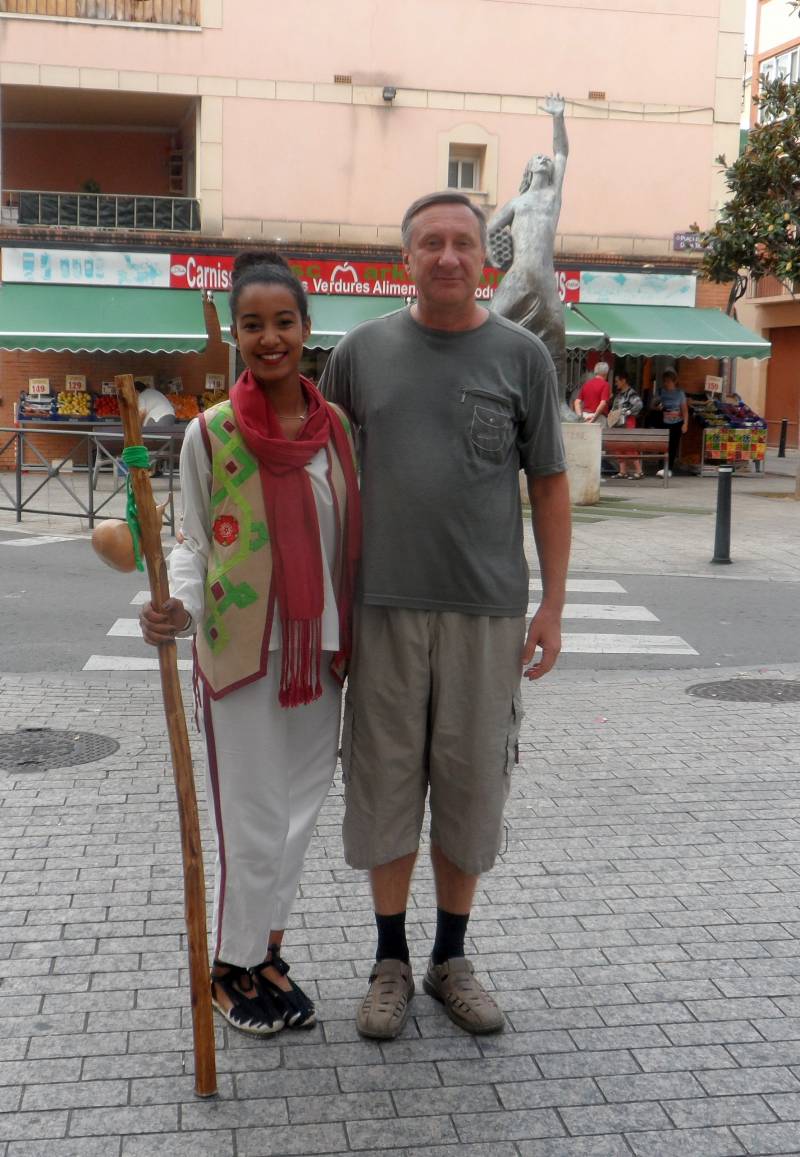
She clearly indicated the right direction, and about an hour later I saw her as part of one of the “teams” participating in the procession.
Church of Our Lady of Mercy:

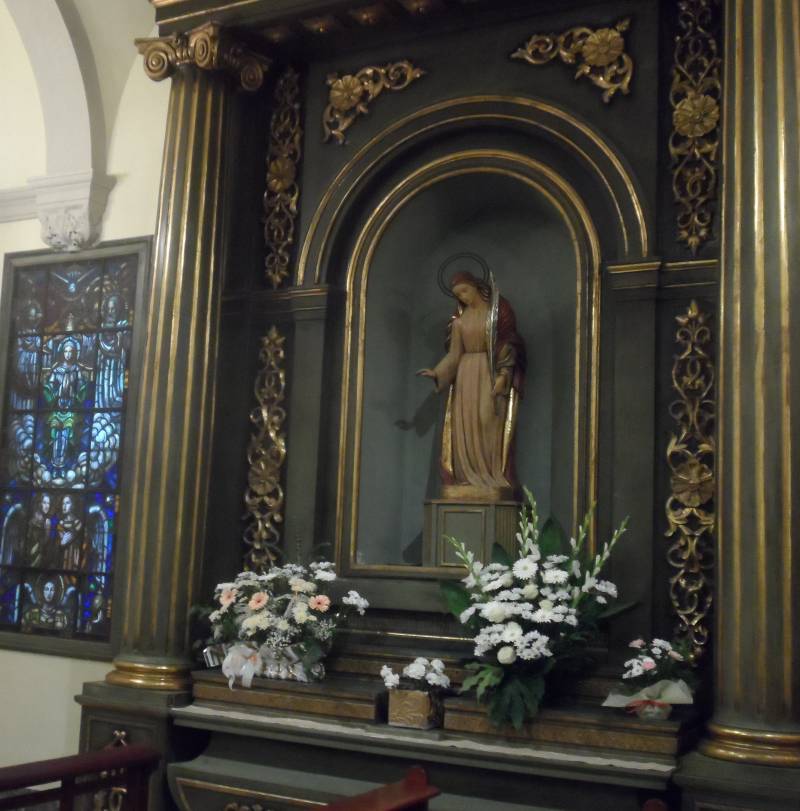
This monument to the shepherd Isabel is located at the supposed place of her meeting with the Virgin Mary.
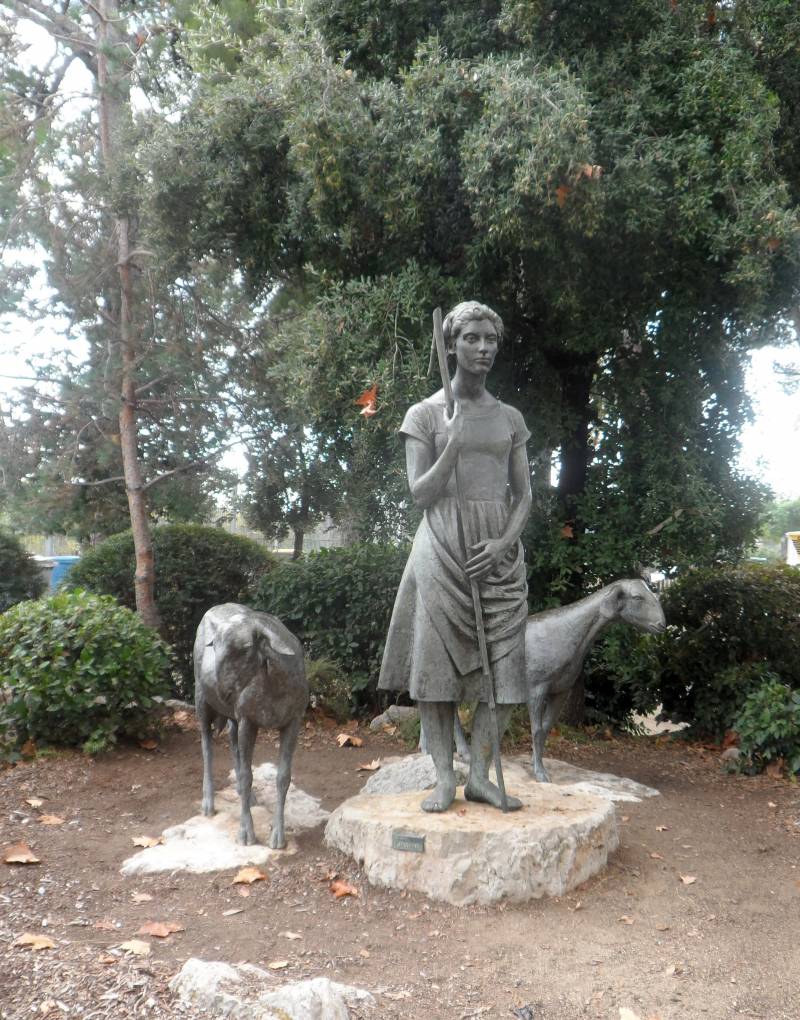
Then, as expected, I went to meet the procession.
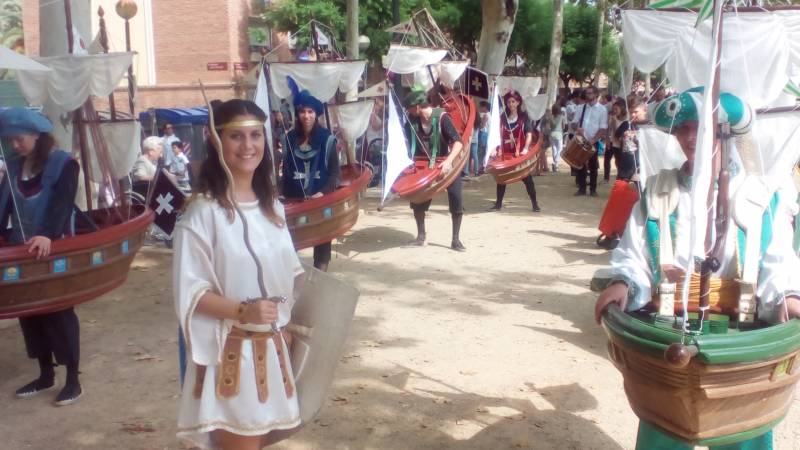
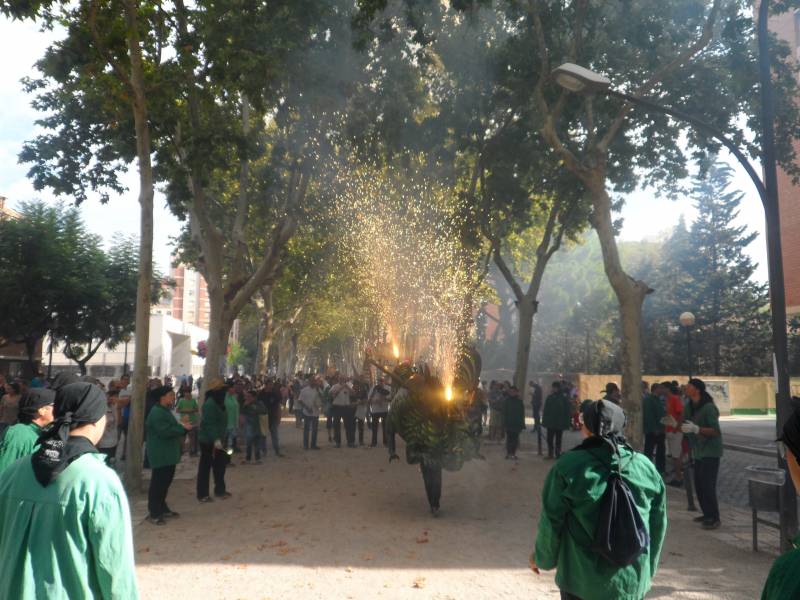
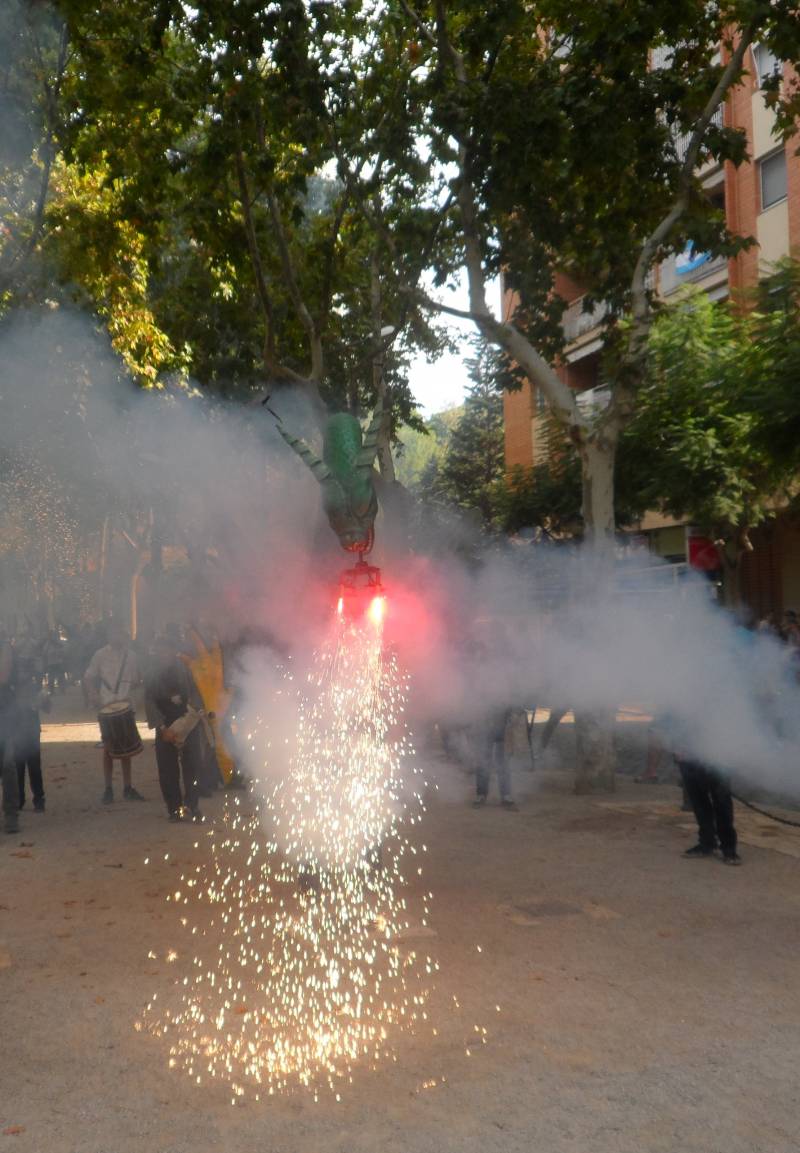
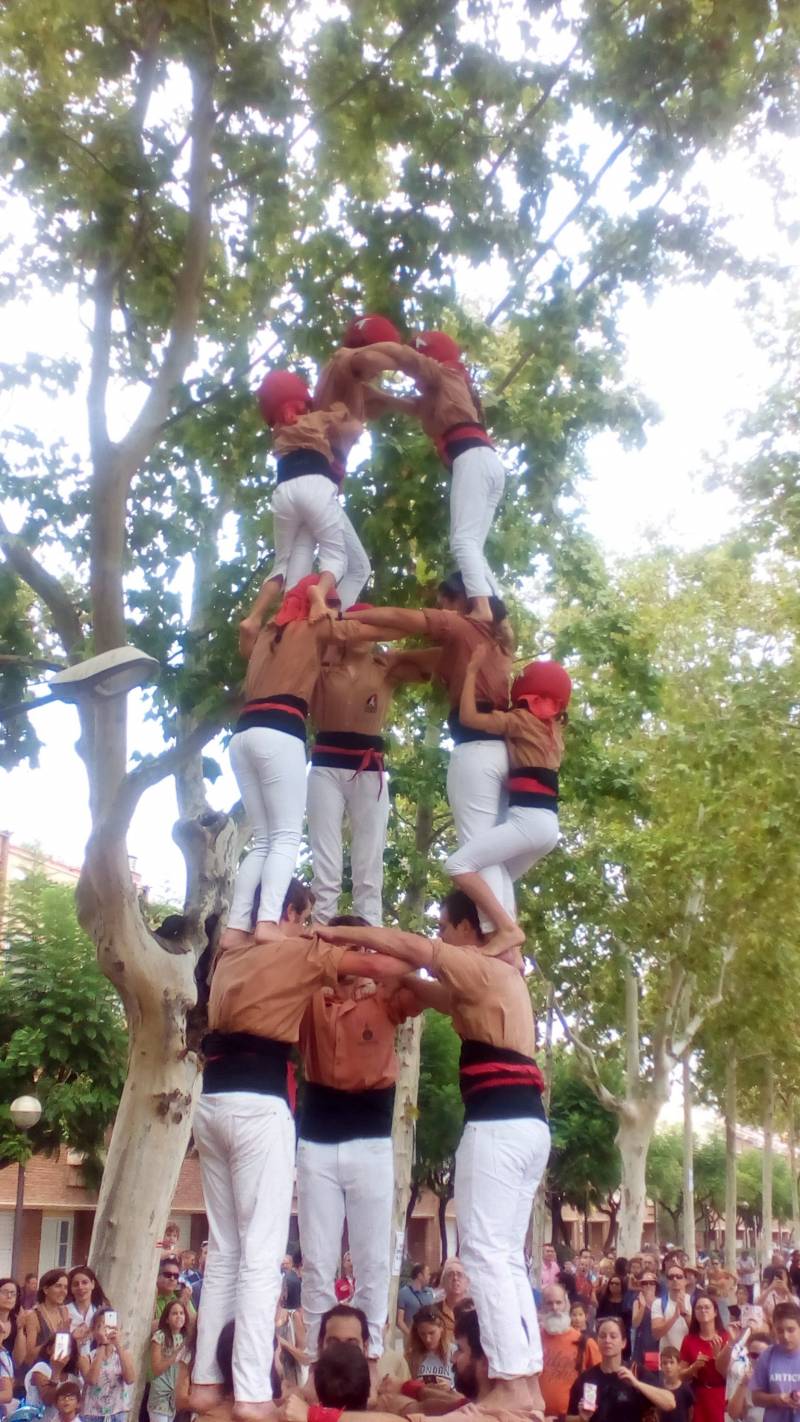
The festive procession, in my opinion, makes a stronger impression in Tarragona. The point is probably that the action in this city takes place not on a wide boulevard, but on a narrow medieval street, where the audience is literally squeezed between the walls of houses and the fire-breathing characters of a medieval bestiary passing in front of them. It creates a very special atmosphere.
But, of course, if possible, you need to see both cities and both holidays.
Information